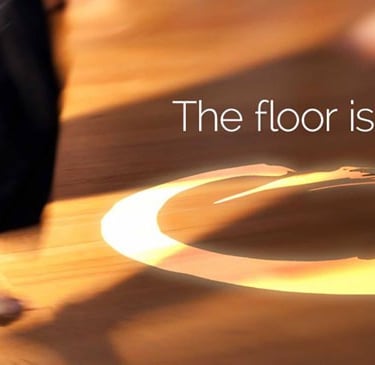items chosen one by one so you have the best option and save money on amazon (Links in articles)
Open Floor Plans Under Fire: Are Privacy and Comfort Being Sacrificed?
Open floor plans have been a dominant trend in American architecture and interior design for over a decade, praised for creating spacious, light-filled homes that encourage socializing and flexibility. But as we reach 2026, this once-beloved design concept is facing growing criticism—and even backlash—from homeowners and experts questioning whether the open layout sacrifices too much privacy, comfort, and functionality. In this article, we’ll explore the reasons why open floor plans are under fire and what alternatives or adaptations are emerging in response.
6/24/20251 min leer


What Are Open Floor Plans?
Open floor plans remove walls separating common areas like the kitchen, dining room, and living room, creating a large, unified space. The idea is to promote interaction, maximize natural light, and make smaller homes feel larger.
Amazon link for your home: amazon.com
Why Open Floor Plans Became Popular
Social Interaction: Easier to entertain guests and keep an eye on kids while cooking or working.
Flexible Space: Allows versatile furniture arrangements and multifunctional use.
Modern Aesthetic: Clean, airy look that fits contemporary tastes.
Natural Light: Fewer walls mean light can travel freely, brightening interiors.
Amazon link for your home: amazon.com
The Backlash: Privacy and Comfort Concerns
1. Lack of Quiet Spaces
Open plans make it difficult to find a private, quiet corner—especially challenging for families with different schedules, remote workers, or those needing personal downtime.
2. Noise Pollution
Without walls to block sound, noise travels easily, leading to distractions and tension.
3. Cooking Odors and Mess Visibility
Smells and messes from the kitchen permeate the entire space, which some find unpleasant.
4. Limited Storage and Defined Areas
Open layouts often sacrifice walls needed for storage, shelving, or art displays. It can also make furniture placement tricky and spaces feel less defined.
Emerging Trends and Solutions
Flexible Partitioning: Sliding doors, folding screens, or movable walls offer adaptable privacy.
Zoning: Using rugs, lighting, and furniture to create “zones” within open areas.
Hybrid Layouts: Combining open common areas with separate rooms or quiet nooks.
Acoustic Treatments: Soft furnishings, wall panels, and carpets to dampen sound.
Amazon link for your home: amazon.com
Are Open Floor Plans Going Out of Style?
Not entirely. While some homeowners reject the concept outright, others are reimagining it with more versatile, privacy-conscious designs. Architects and designers are responding by offering customized solutions that balance openness with comfort.
Final Thoughts: Finding the Right Balance in 2026
The debate over open floor plans reflects changing lifestyles, work habits, and family dynamics. The key is to design homes that support social connection without sacrificing privacy and comfort.